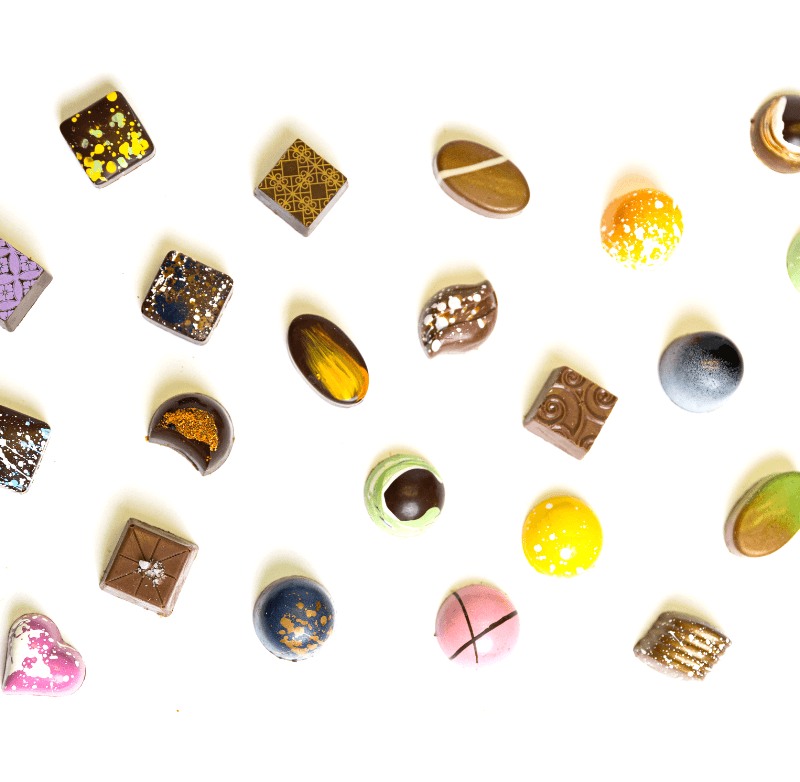Can You Really Taste the Difference? A Chocolate Tasting Guide to Chocolate from Different Regions

There’s a growing movement among chocolate lovers and culinary experts alike to elevate chocolate tasting to the same level as wine, coffee, or even craft beer. And it makes sense—chocolate is one of the most complex and nuanced foods in the world, with more than 600 flavor compounds (compared to just over 200 in red wine).
But one of the most fascinating things about high-quality chocolate is how dramatically it can change depending on where it’s from. That’s right—chocolate grown in Madagascar doesn’t taste the same as chocolate grown in Peru or Ghana. The flavor is shaped by the environment, the soil, the climate, and even the way the beans are fermented and dried.
So if you’ve ever wondered whether you can actually taste the difference between chocolates from different regions, the answer is yes. And once you learn how to recognize these differences, chocolate tasting becomes not only a delicious activity but a deeply rewarding and educational one.
This guide is designed to help you explore the world through chocolate—from understanding how origin affects flavor, to how to taste chocolate like a connoisseur, to identifying what to expect from cacao grown in some of the world’s top regions.
Why Origin Matters in Chocolate Flavor
Cacao beans are a direct product of their environment. Everything from rainfall and humidity levels to soil composition, elevation, and even nearby vegetation affects the way a cacao tree grows and the flavor of its fruit.
In the chocolate world, this concept is known as terroir—a term borrowed from the wine industry that refers to how a crop’s local environment influences its taste. When chocolate is made from beans grown in a single origin and processed with care, those environmental factors shine through in complex and often surprising ways.
Most mass-market chocolates use blended cacao from multiple countries to create a consistent but generic taste. Artisan and single-origin chocolates, on the other hand, celebrate these regional differences, offering a more authentic and traceable chocolate experience.
Understanding origin is one of the first steps in becoming a more informed and enthusiastic chocolate taster.
How to Taste Chocolate to Experience Regional Differences
If you want to appreciate regional chocolate flavor fully, you need to slow down and taste intentionally. Here are the steps to help you get the most out of your chocolate tasting experience:
Look closely at the chocolate. High-quality chocolate should have a smooth, glossy finish with no streaks or air bubbles. This indicates proper tempering and freshness.
Break a piece and listen to the snap. A clean, crisp snap is a sign of good tempering and high cocoa butter content. Softer breaks might indicate poor tempering or added vegetable fats.
Smell the chocolate before tasting. Aroma plays a huge role in flavor perception. Hold the piece close to your nose and inhale deeply. See if you can detect notes like fruit, nuts, earth, or spice.
Place the chocolate on your tongue and let it melt slowly. Resist the urge to chew. As it melts, notice how the flavors evolve. Some chocolates start with sweetness and finish bitter, while others may bloom with tart fruit or mellow nuttiness.
After swallowing, pay attention to the finish. Fine chocolate often leaves a lingering aftertaste that can be floral, smoky, or creamy depending on the region.
The more you taste with intention, the more easily you’ll start to pick up on the unique characteristics that define chocolate from each region.
Regional Chocolate Flavor Profiles and What Makes Them Distinct
Understanding how different cacao-growing regions impact flavor can help you identify what you're tasting and why. Here’s what to expect from some of the world’s most celebrated cacao origins.
Madagascar produces cacao that is known for its vibrant, fruity flavor and high acidity. Grown primarily in the Sambirano Valley, the beans here are influenced by the island’s tropical climate and unique soil composition. Expect chocolate with bright notes of red berries, citrus, and sometimes even a hint of raisin or pineapple.
Ecuador is home to the prized Arriba Nacional cacao variety, which is famed for its floral aroma and deep, earthy complexity. Ecuadorian chocolate often has notes of jasmine, nuts, and soft vanilla. It’s well-balanced and sophisticated, making it a favorite among artisan chocolatiers and serious chocolate enthusiasts.
Venezuela offers some of the rarest and most coveted cacao varieties in the world, particularly Criollo and Trinitario. Venezuelan cacao delivers a rich, smooth, and nutty profile with hints of caramel and mild spice. The flavors are often subtle yet layered, with a luxurious mouthfeel and very little bitterness.
Ghana is one of the world’s largest cacao exporters and produces beans with a bold, straightforward chocolate flavor. Ghanaian chocolate is typically roasted and robust, with a classic cocoa taste and minimal acidity. It’s ideal for those who prefer a more traditional chocolate profile without fruitiness or floral notes.
Peru grows a wide variety of native cacao strains, many of which thrive in the Amazonian foothills. Peruvian chocolate tends to have wild, herbal, and fruit-forward flavor profiles with surprising notes like dried figs, red fruits, olives, and even green herbs. This region is a favorite among experimental chocolate lovers.
Each of these origins offers a different sensory experience, and part of the joy of tasting is exploring those differences and discovering your personal preferences.
Tips for Hosting a Chocolate Tasting Experience at Home
Whether you're new to chocolate tasting or looking to share your passion with others, hosting a regional chocolate tasting can be a fun and educational way to explore the world through flavor.
Start by sourcing chocolate bars from different regions, ideally labeled single-origin. Choose a variety of cacao percentages so you can explore both milk and dark chocolate profiles.
Create a clean and neutral tasting environment. Avoid strong smells in the room, and serve palate cleansers like sparkling water or plain bread.
Encourage guests to take notes on aroma, taste, texture, and finish. Provide a flavor wheel or guide to help identify specific notes like berry, spice, wood, or earth.
Guide the tasting in a logical order—usually from mildest to boldest. This helps prevent stronger flavors from overpowering the more delicate ones.
After the tasting, discuss impressions and favorite origins. It’s always fascinating to see how different palates perceive the same chocolate differently.
By the end of the session, everyone will have a better understanding of how region impacts flavor—and likely a deeper appreciation for fine chocolate.
Why Dallmann Confections Focuses on Origin-Driven Chocolate
At Dallmann Confections, our mission is to elevate the chocolate experience by connecting customers with high-quality, thoughtfully sourced ingredients. We carefully select couverture chocolate made from premium cacao grown in the world’s most renowned regions. Every confection we create is designed to highlight those unique flavor profiles—whether it’s a ganache that amplifies the floral notes of Ecuadorian cacao or a bonbon that brings out the bright berry tones of Madagascar beans.
Our passion lies not just in making beautiful chocolate, but in telling stories with every bite. We believe chocolate should be as complex, as nuanced, and as culturally rich as the places it comes from.
When you choose Dallmann, you're not just buying chocolate—you're embarking on a global tasting journey.
Discover the World One Bite at a Time
Now that you understand how cacao origin affects flavor, it's time to put your palate to the test. The next time you’re choosing a chocolate bar or truffle, don’t just reach for your usual. Instead, pick up something from a new region. Ask yourself what you taste. Notice the aromas. Compare it to chocolate from other origins. You’ll be amazed at how much depth and diversity exists in something as familiar as chocolate.
Ready to begin your tasting adventure?
Explore our curated selection of single-origin chocolate and let your taste buds travel the globe. Whether you're new to fine chocolate or a seasoned connoisseur, there's always something new to discover in every region, every bite, and every beautifully crafted Dallmann creation.













